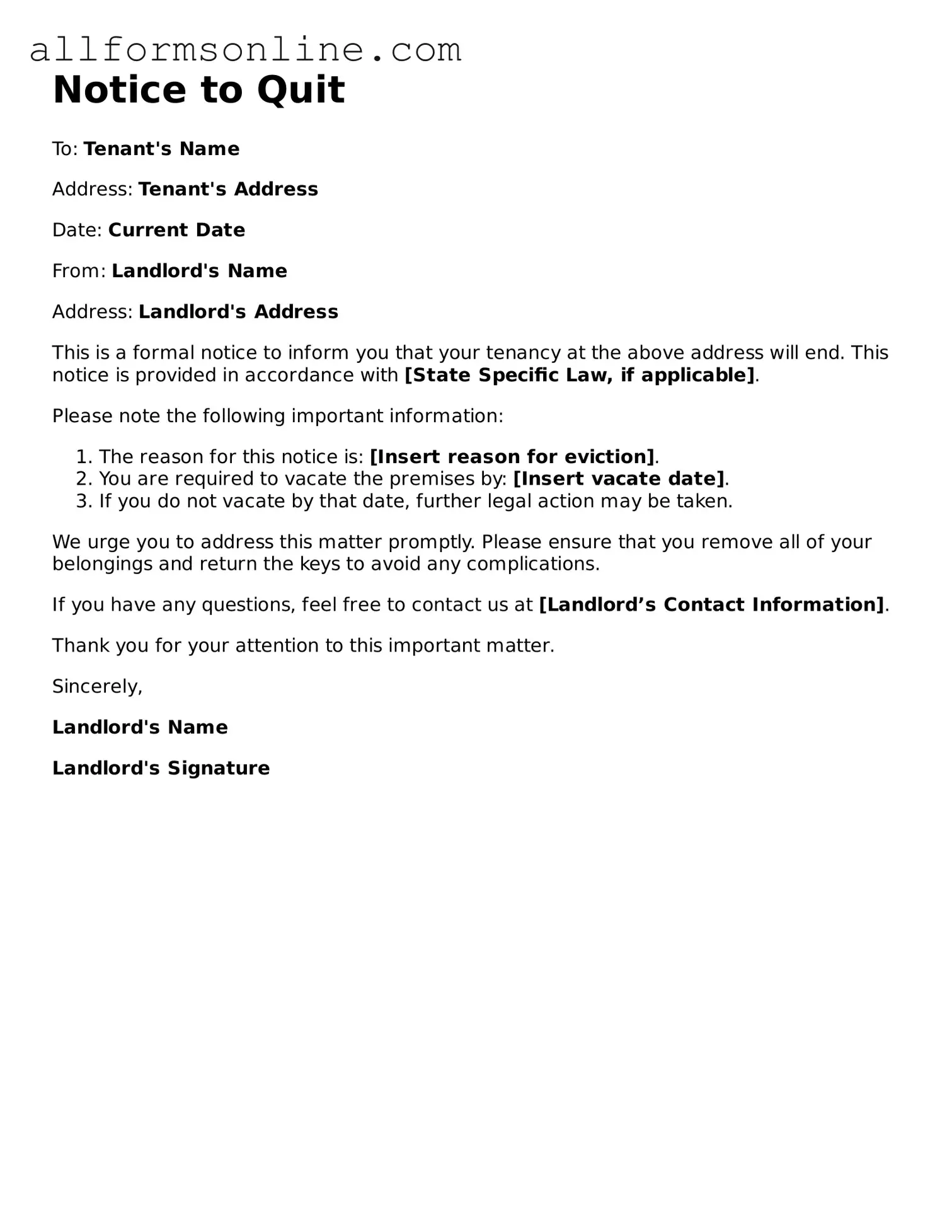What is a Notice to Quit form?
A Notice to Quit form is a legal document that a landlord uses to inform a tenant that they must vacate the rental property. This notice typically outlines the reasons for the eviction, such as non-payment of rent or violation of lease terms. It serves as the first step in the eviction process and provides the tenant with a specified time frame to leave the premises.
How long does a tenant have to respond to a Notice to Quit?
The time frame for a tenant to respond to a Notice to Quit can vary depending on state laws and the reason for the eviction. Generally, tenants may have anywhere from a few days to a month to vacate the property. It’s important for tenants to carefully read the notice and understand their rights and obligations during this period.
Can a tenant contest a Notice to Quit?
Yes, a tenant can contest a Notice to Quit. If a tenant believes the notice is unjust or that they have not violated any lease terms, they may choose to challenge the eviction in court. It’s advisable for tenants to gather any relevant documentation and seek legal assistance to better understand their options and the process involved.
What happens if a tenant does not leave after receiving a Notice to Quit?
If a tenant does not vacate the property by the deadline specified in the Notice to Quit, the landlord may initiate formal eviction proceedings. This typically involves filing a lawsuit in court. The tenant will then have the opportunity to present their case, and if the court rules in favor of the landlord, the tenant may be ordered to leave the property.
Is a Notice to Quit required in all eviction cases?
In most cases, a Notice to Quit is required before a landlord can proceed with eviction. However, specific laws may vary by state. Some jurisdictions may have exceptions, such as for serious lease violations. It’s crucial for landlords to understand their local laws to ensure compliance with the eviction process.
What information should be included in a Notice to Quit?
A Notice to Quit should clearly state the reason for eviction, the date by which the tenant must vacate, and any relevant lease terms that have been violated. It should also include the landlord's contact information and any instructions for returning keys or handling security deposits. Clarity in this document can help prevent misunderstandings and disputes.
